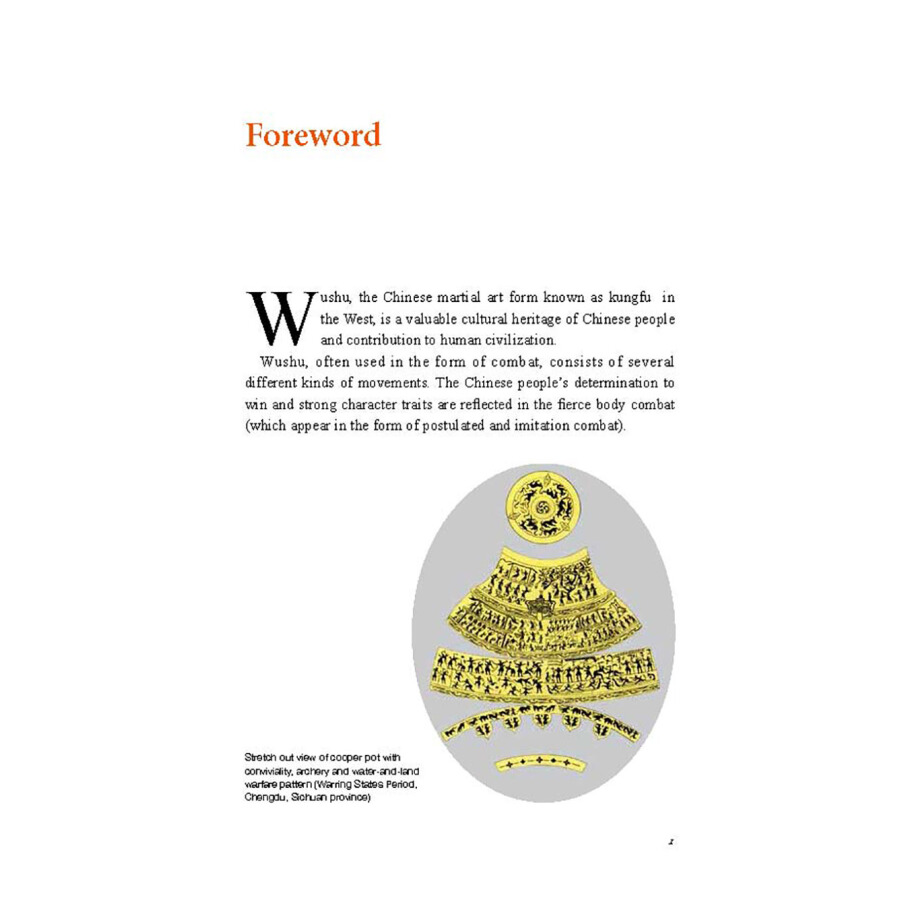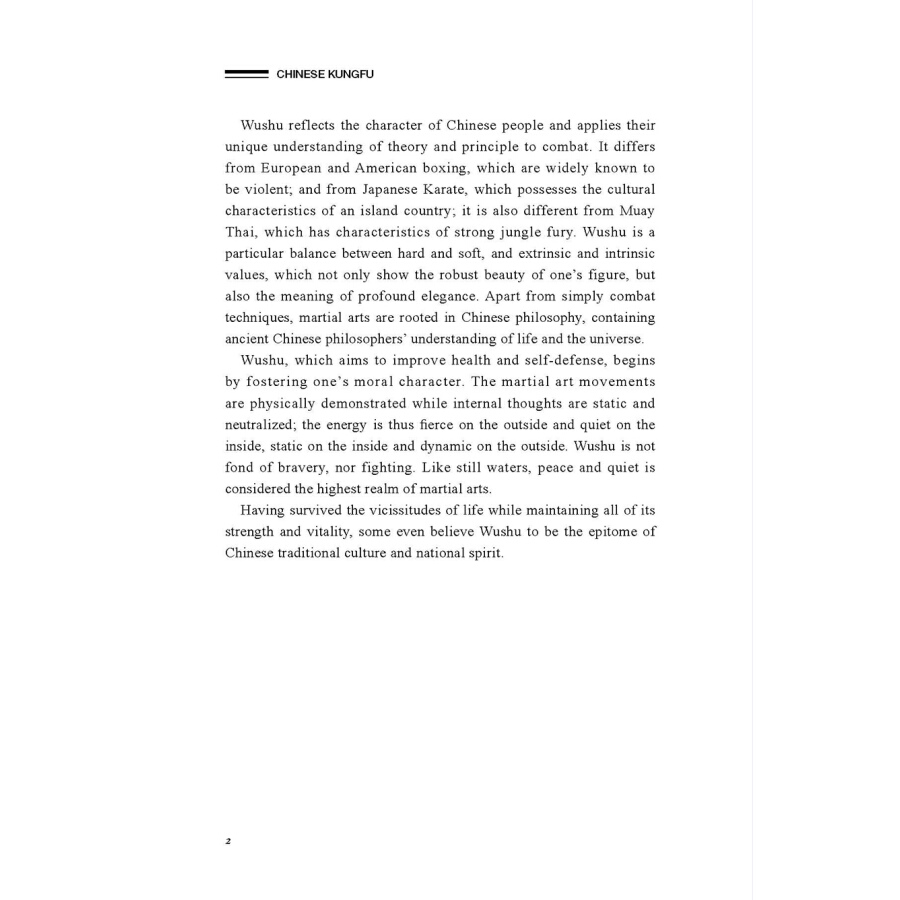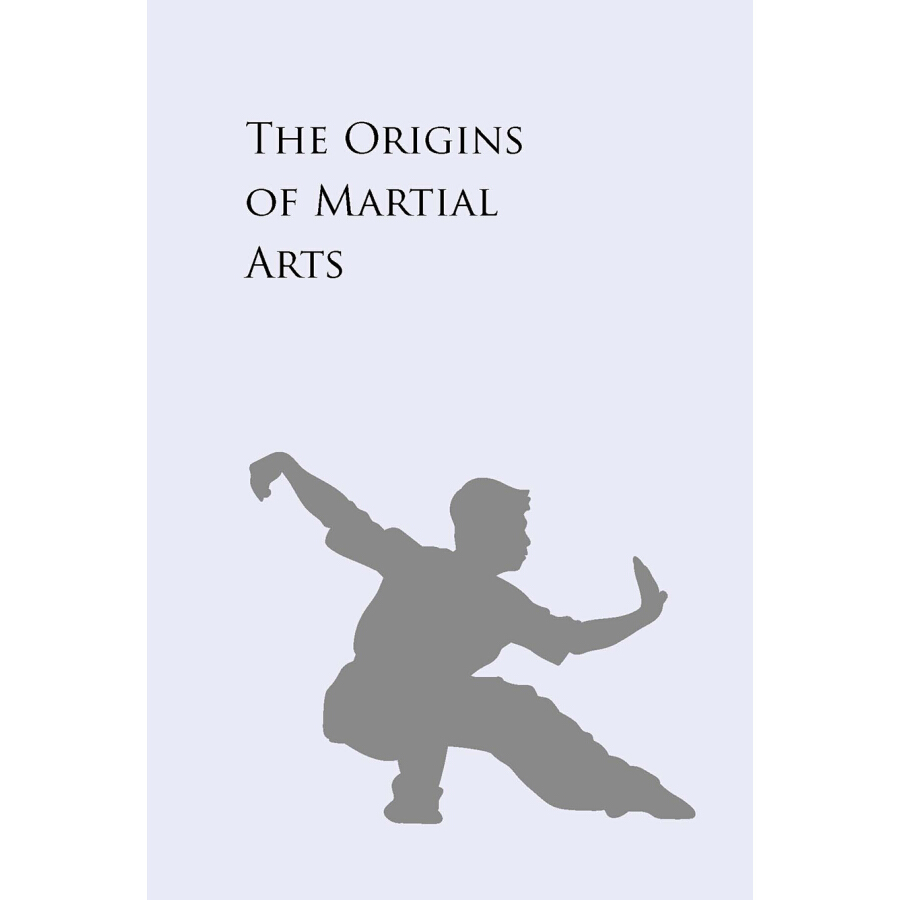Details
Wushu, the Chinese martial art form known as kungfu in the West, embodies the national traditional culture in martial art form and also reflects the self-defense and health practices of Chinese people. The core philosophy of Wushu is drawn from the Confucius principle of physical and mental integration combined with neutralization; the Taoist principle of dynamic balance; the Buddhist principle of showing cultural syncretism of Confucianism, Daoism and Buddhism in China; and the Eastern theory, which believes man is an integral part of nature.
About Author
Wang Guangxi, whose pen name is Lu Cao, was born in Xixia, Henan province in 1941 and died in 2008. He graduated from the Department of Chinese Language and Literature of Henan University. He had served as a researcher in the Literature Research Institute of Henan Academy of Social Science, a fellow in the Henan Research Institute of Culture and History, standing director of Modern Chinese Literature Research Society and deputy dean of Wushu Culture Research Center, Physical Education Institute, Zhengzhou University. His life was devoted to modern literature and wushu culture research, and his works include Buddhism and Chinese Modern Poetry, Biography of Zuo Zongtang, Kong Fu-Culture of Chinese Wushu Circles, Chinese Soldier, Chinese Wushu and Wushu Spirit and Central Plaint Culture •Wushu.
Sample Pages Preview



Wushu, the Chinese martial art form known as kungfu in the West, is a valuable cultural heritage of Chinese people and contribution to human civilization.
Wushu, often used in the form of combat, consists of several different kinds of movements. The Chinese people’s determination to win and strong character traits are reflected in the fierce body combat (which appear in the form of postulated and imitation combat). Wushu reflects the character of Chinese people and applies their unique understanding of theory and principle to combat. It differs from European and American boxing, which are widely known to be violent; and from Japanese Karate, which possesses the cultural characteristics of an island country; it is also different from Muay Thai, which has characteristics of strong jungle fury. Wushu is a particular balance between hard and soft, and extrinsic and intrinsic values, which not only show the robust beauty of one’s figure, but also the meaning of profound elegance. Apart from simply combat techniques, martial arts are rooted in Chinese philosophy, containing ancient Chinese philosophers’ understanding of life and the universe.
Wushu, which aims to improve health and self-defense, begins by fostering one’s moral character. The martial art movements are physically demonstrated while internal thoughts are static and neutralized; the energy is thus fierce on the outside and quiet on the inside, static on the inside and dynamic on the outside. Wushu is not fond of bravery, nor fighting. Like still waters, peace and quiet is considered the highest realm of martial arts.
Having survived the vicissitudes of life while maintaining all of its strength and vitality, some even believe Wushu to be the epitome of Chinese traditional culture and national spirit


